S4C Next Generation, Namibia
-
1
-
0Shares
While on the field for a project, a S4C Team engaged with a local community in Namibia. And…
(below in Spanish)
Last June, the Shoot4Change team formed by the photographer Davide Camesasca, the filmmaker Nicoló Bruna and the journalist Judit Figueras, spent 13 days in Namibia. The aim of their trip was to document the situation of children living in a village in the southeast of the country, Gochas.
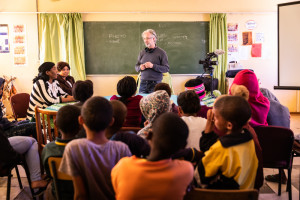 During their stay, Davide, Nicoló and Judit carried out an audiovisual workshop addressed to the primary school students of Gochas. Throughout the day, the Shoot4Change team briefed the children on the basic concepts of photography and video, showing them examples of professional audiovisual and photographic samples.
During their stay, Davide, Nicoló and Judit carried out an audiovisual workshop addressed to the primary school students of Gochas. Throughout the day, the Shoot4Change team briefed the children on the basic concepts of photography and video, showing them examples of professional audiovisual and photographic samples.
Lastly, they conducted a practical exercise with the multiple digital cameras that had been collected before the trip. In this last assignment, different small groups were set up so that the students could learn how the camera works and how to use it properly. Once the practice was over, the children were given a photographic task about their day-to-day life in the community and they had to deliver it within three days.
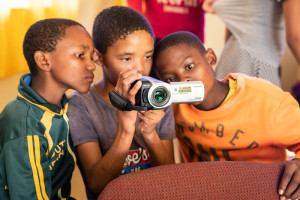 The images that the kids portrayed reflected a harsh reality and difficult living conditions. Most of the children in Gochas live in an area called 'the location'. In this marginalized zone, the houses are shacks made of rubbish, plastics, wood and asbestos. These shanties have neither a tap nor access to electricity.
The images that the kids portrayed reflected a harsh reality and difficult living conditions. Most of the children in Gochas live in an area called 'the location'. In this marginalized zone, the houses are shacks made of rubbish, plastics, wood and asbestos. These shanties have neither a tap nor access to electricity.
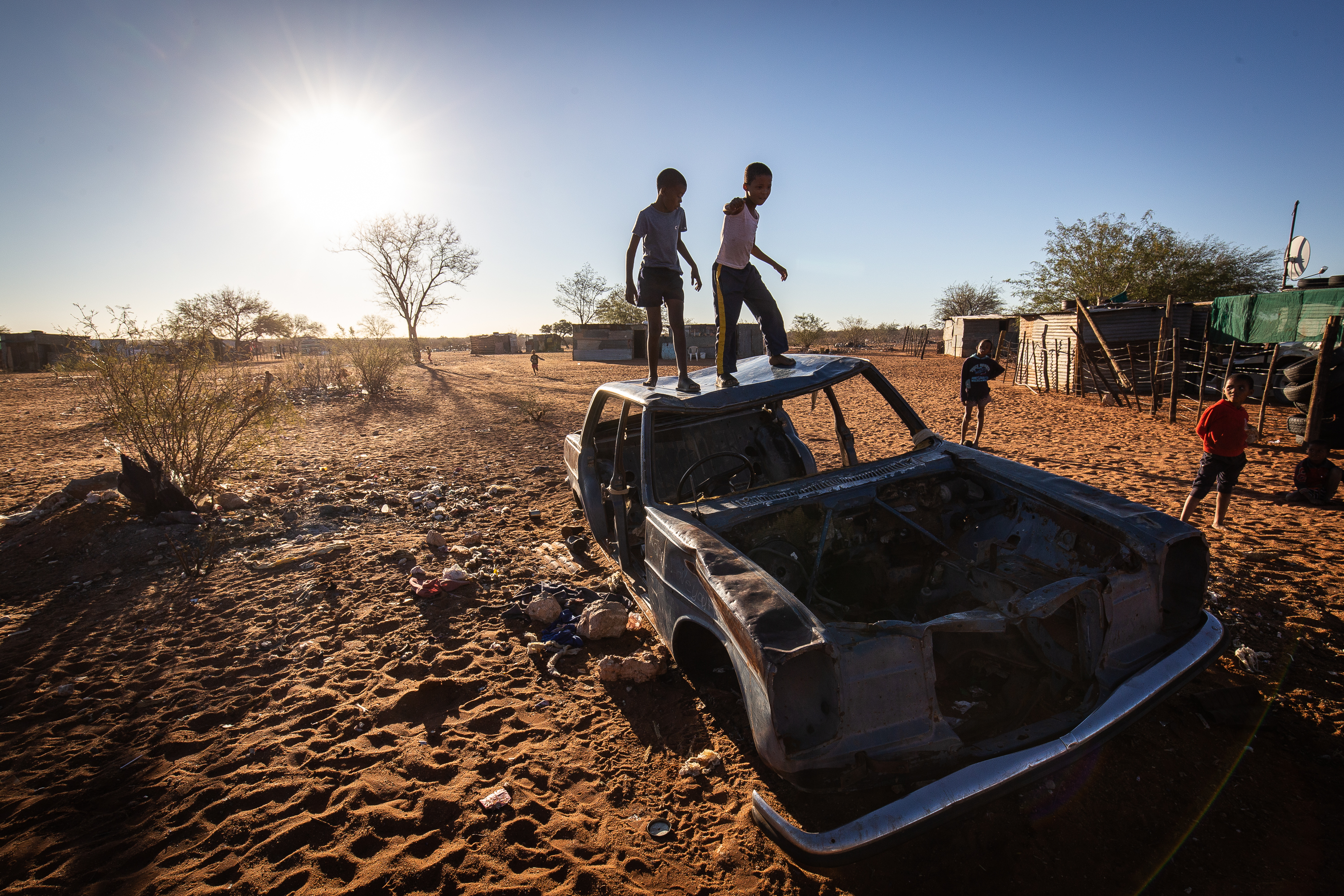
ph: Davide Camesasca/S4C Spain
Like most Namibian villages, Gochas is split into two and sometimes three parts. The white population and the Basters (descendants of Dutch and indigenous people) live in the more wealthy sectors and in the 'location' resides the majority of the Nama ethnic population, which is the black community.
In Gochas, the Nama people still drag on a colonial and historical legacy marked by marginalization and racial separation. After Germany's defeat in World War I, the League of Nations handed over Namibia, then known as the German South West Africa and controlled by the Germans since 1840, for the benefit of the South African Union, which is now South Africa.
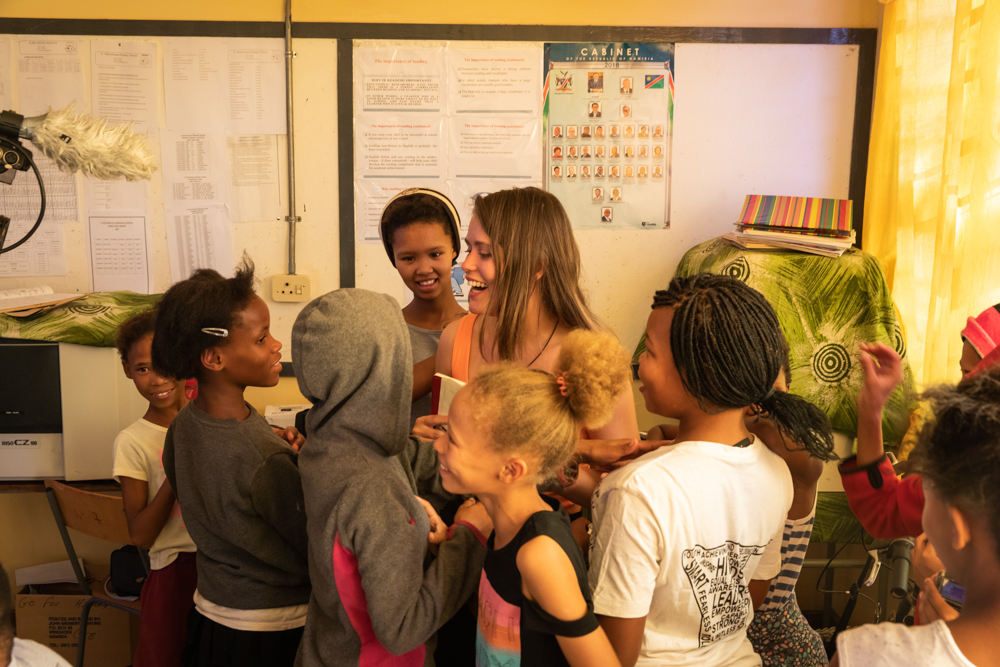
In 1948, the Afrikaners, an ethnic group of Dutch descent that arrived in Namibia after the country fell under South African hegemony, imposed an Apartheid system in South Africa and, therefore, also in the region of South-West Africa, the current Namibia. Apartheid, which means "separation" in Afrikaans, implanted a segregation system between different racial groups for the political benefit of the white population. Despite the fact that in 1966 the South West African People's Organization (Swapo), an insurgent guerrilla group, declared war on the South African regime and in 1990 proclaimed the country's independence, Namibia's black population remains economically disadvantaged in comparison to whites. In fact, according to the United Nations Development Programme (UNDP), Namibia is the second most unequal country in the world in terms of its population’s wealth, only surpassed by its neighbour South Africa.
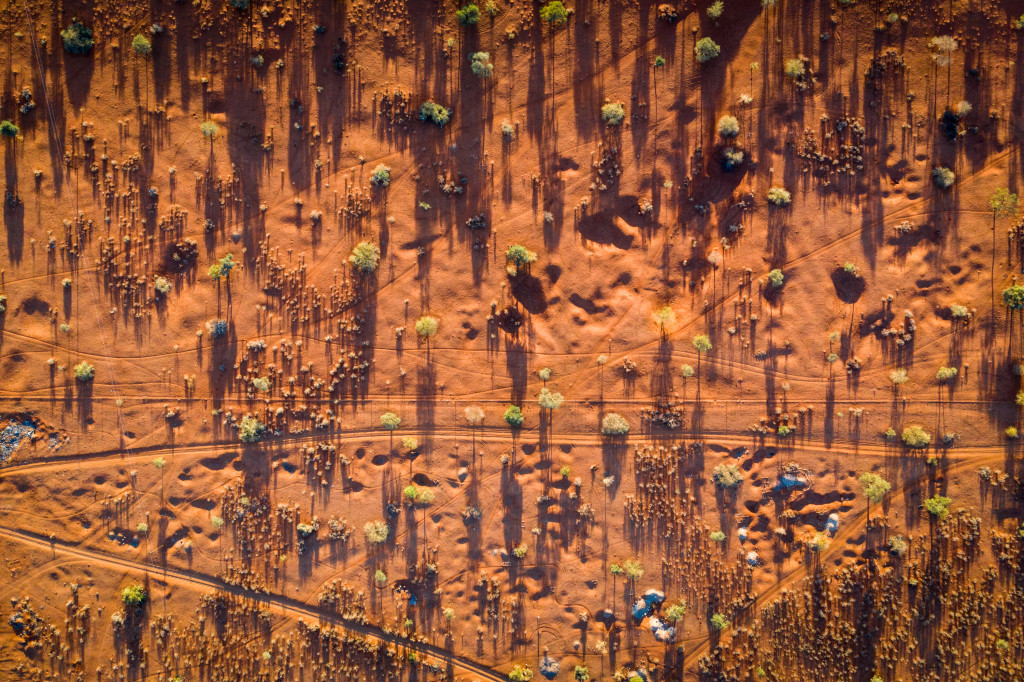
ph: Davide Camesasca/S4C Spain
Some of the child cases that Shoot4change team was able to screen had either dropped out of school or were at risk of doing so. Most of them are orphans and live with a family member who, in almost all cases, is addicted to alcohol. Alcoholism, due to a very high unemployment rate and the aftermath of colonialism, is the main problem affecting the Nama population and, consequently, the minors. The adults in charge of these children are no longer responsible under the effects of this substance and, in many cases, the kids do not have food, clean clothes and a minimum of hygiene.
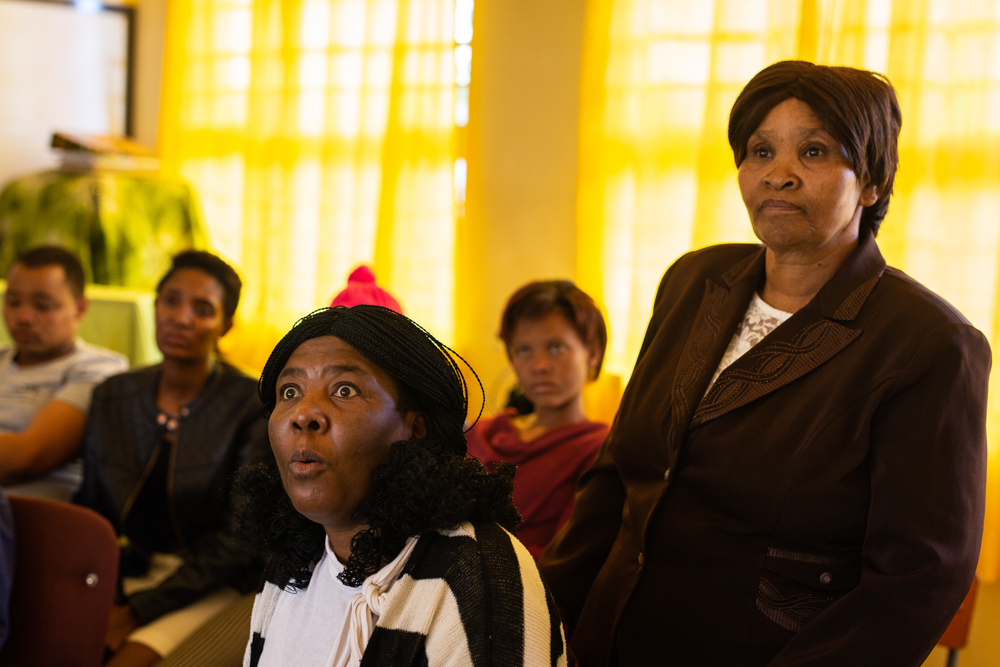 Theopauline Goliath, the former principal of the primary school in Gochas, showed the situation of the children who were in a more critical situation. She is the one who invited Shoot4Change to travel to Gochas and asked them help in the construction of a shelter that would give the children a safe home with a healthy environment.
Theopauline Goliath, the former principal of the primary school in Gochas, showed the situation of the children who were in a more critical situation. She is the one who invited Shoot4Change to travel to Gochas and asked them help in the construction of a shelter that would give the children a safe home with a healthy environment.
One of the most worrying stories was Flora's, a 10-year-old girl who lost her parents, both affected by AIDS, and now lives with an adult couple (59 and 60 years old) who do not work and spend most of their time drinking in a shack that brews beer. Flora also lives with her younger sister, Michelle, and the two grandchildren of the couple she lives with, whom she cares for, feeds and cleans. On weekends, she feeds the other children living in the district. With other children, she organizes groups to hunt birds, pluck them and roast them on the fire. According to Flora, she helps other children because she feels sorry for them. In addition, the child admits that she doesn't like living with her adoptive grandmother because when she drinks too much, she punishes her, beats her and insults her.
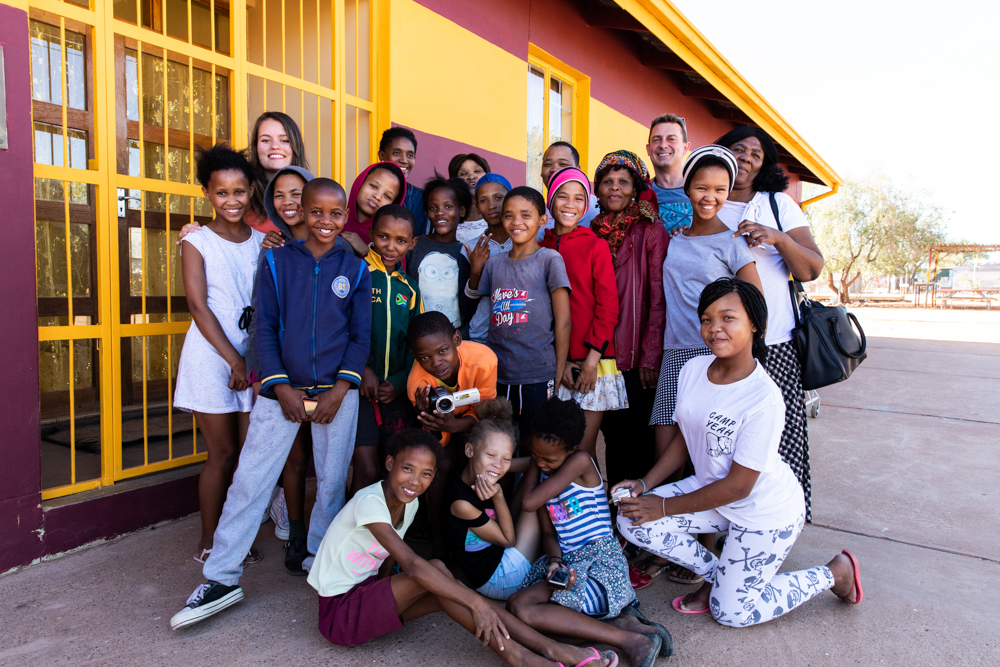
After the fieldwork, the three members of Shoot4Change now start their photographic, audiovisual and journalistic projects, in which they will capture the reality of the children who live in this Namibian village.
Shoot4Change does not forget its social mission and, therefore, the result of their efforts will be used to carry out a fundraising campaign aimed at improving the lives of these children.
Photo Gallery
Mientras trabajaba en un proyecto, un equipo S4C se comprometio’ con una comunidad local. Y….
El pasado mes de junio, el equipo de Shoot4Change formado por el fotógrafo Davide Camesasca, el filmmaker Nicoló Bruna y la periodista Judit Figueras, estuvieron en Namibia un total de 13 días. El objetivo de su viaje fue documentar la situación de los niños y niñas de un poblado en el sud-este del país, Gochas.
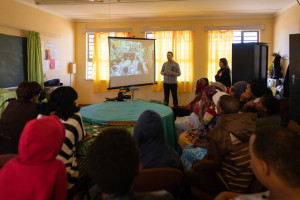 Durante su estancia, Davide, Nicoló y Judit llevaron a cabo un taller audiovisual dirigido a los alumnos de la escuela primaria de Gochas. A lo largo de la jornada, se explicó a los menores los conceptos básicos en fotografía y vídeo, se les mostró ejemplos de trabajos audiovisuales y fotográficos profesionales.
Durante su estancia, Davide, Nicoló y Judit llevaron a cabo un taller audiovisual dirigido a los alumnos de la escuela primaria de Gochas. A lo largo de la jornada, se explicó a los menores los conceptos básicos en fotografía y vídeo, se les mostró ejemplos de trabajos audiovisuales y fotográficos profesionales.
Finalmente, se llevó a cabo una práctica con las diferentes cámaras digitales que se habían recaudado previamente al viaje. En este último ejercicio se formaron diferentes grupos reducidos con la intención de que los estudiantes conocieran el funcionamiento de la cámara y aprendieran a utilizarla correctamente. Una vez finalizada la práctica, se encargó a los niños un trabajo fotográfico sobre el día a día en su comunidad y lo tuvieron que entregar en un plazo de tres días.
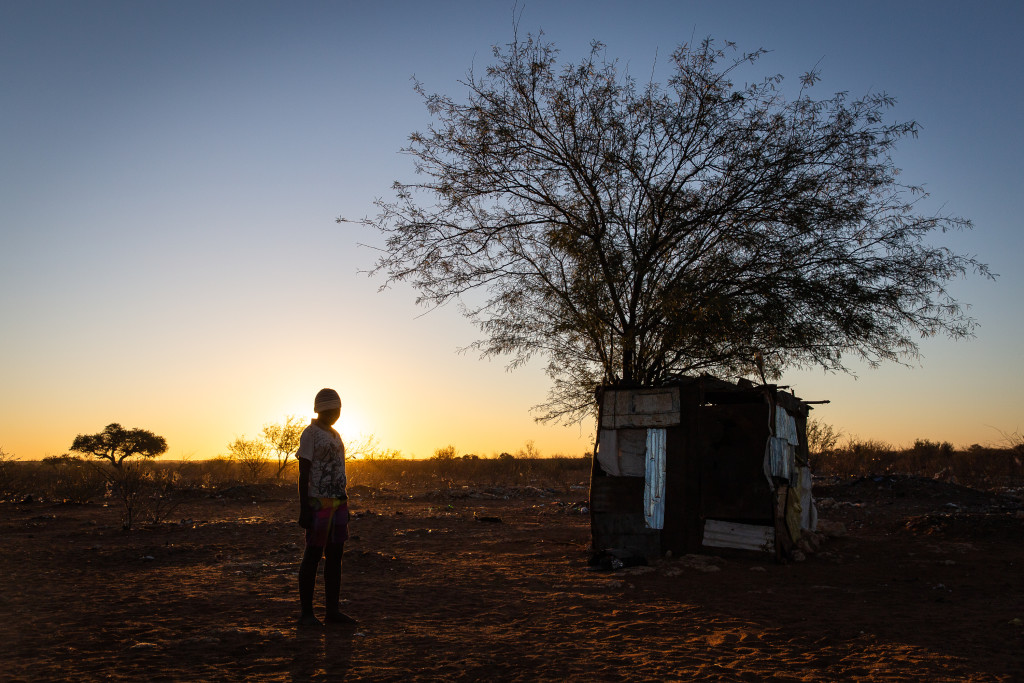
ph: Davide Camesasca/S4C Spain
En las imágenes que retrataron los menores se reflejaba una realidad dura y unas condiciones de vida difíciles. La mayoría de los niños en Gochas viven en una zona llamada ‘location’. En esta área marginada, las casas son chabolas hechas a base de desechos como plásticos, madera y uralita. Estos barracones no disponen ni de un grifo de agua corriente, ni tampoco tienen acceso a la electricidad.
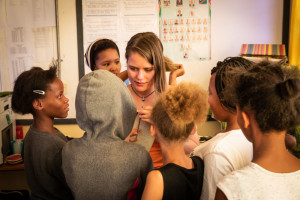 Como la mayoría de los pueblos en Namibia, Gochas está dividido en dos y, a veces, tres partes. La población blanca y los basters (descendientes de holandeses e indígenas) viven en los sectores más acomodados y en la ‘location’, reside la mayoría de población de etnia nama, es decir, la comunidad negra.
Como la mayoría de los pueblos en Namibia, Gochas está dividido en dos y, a veces, tres partes. La población blanca y los basters (descendientes de holandeses e indígenas) viven en los sectores más acomodados y en la ‘location’, reside la mayoría de población de etnia nama, es decir, la comunidad negra.
En Gochas, la población nama sigue arrastrando un legado colonial e histórico marcado por la marginación y la separación racial. Después de la derrota alemana en la Primera Guerra Mundial, la Sociedad de las Naciones entregó a Namibia, entonces llamada África del Sur-Oeste Alemana y controlada por los alemanes desde 1840, en beneficio de la Unión Sudafricana, la actual Sudáfrica.
En 1948 los afrikáners, una etnia de origen neerlandés que llegó a Namibia después de que el país cayera bajo la hegemonía sudafricana, impusieron un sistema Apartheid en Sudáfrica y, por tanto, también en la región de África del Sud-Oeste, la actual Namibia. El Apartheid, que significa “separación” en lengua afrikaans, implantó una segregación entre los diferentes grupos raciales en beneficio político de la población blanca. Pese a que en 1966 la Organización Popular de África del Sud-Oeste (Swapo, en sus siglas en inglés), un grupo guerrillero insurgente, declarara la guerra al régimen sudafricano y en 1990 proclamara la independencia del país, la población negra en Namibia sigue en desventaja económica respecto a la población blanca. De hecho, según el Programa de Desarrollo de las Naciones Unidas (UNDP, en sus siglas en inglés), Namibia es el segundo país del mundo con más desigualdad entre la población, sólo superado por su vecina Sudáfrica.
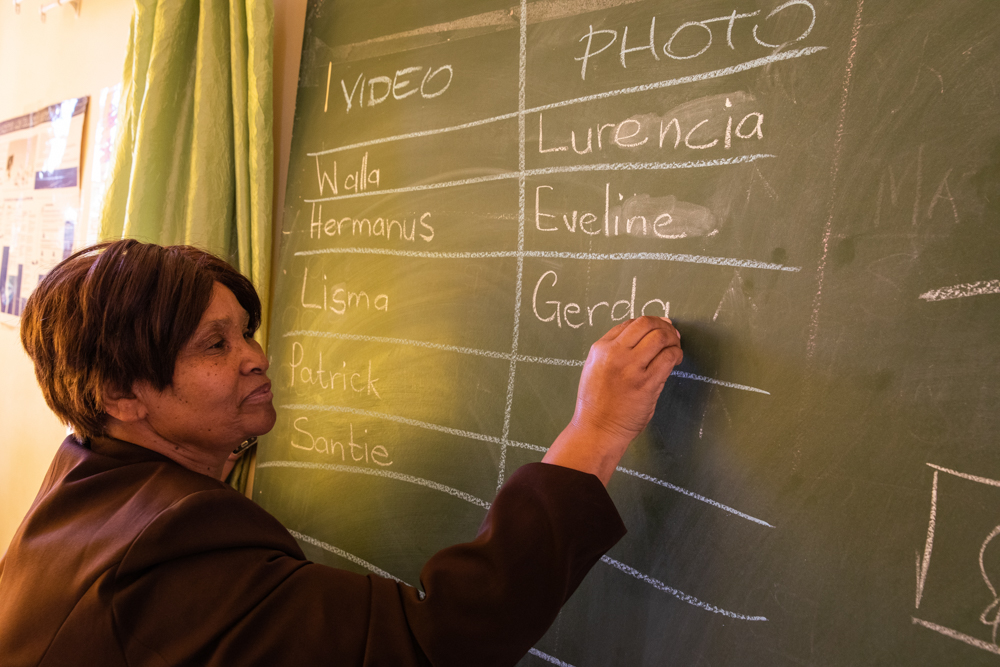
Algunos de los casos de niños que el equipo de Shoot4change pudo analizar habían abandonado la escuela o se encontraban en riesgo de hacerlo. La mayoría de ellos son huérfanos y viven con algún familiar que, en casi todos los casos, abusa del consumo alcohólico. El alcoholismo, debido a una tasa de paro muy elevada ya las secuelas del colonialismo, es el principal problema que afecta a la población nama y, en consecuencia, a los menores. Los adultos responsables de estos niños y niñas dejan de serlo bajo los efectos de esta sustancia y, en muchas ocasiones, los pequeños no disponen de comida, ropa limpia y una mínima higiene.
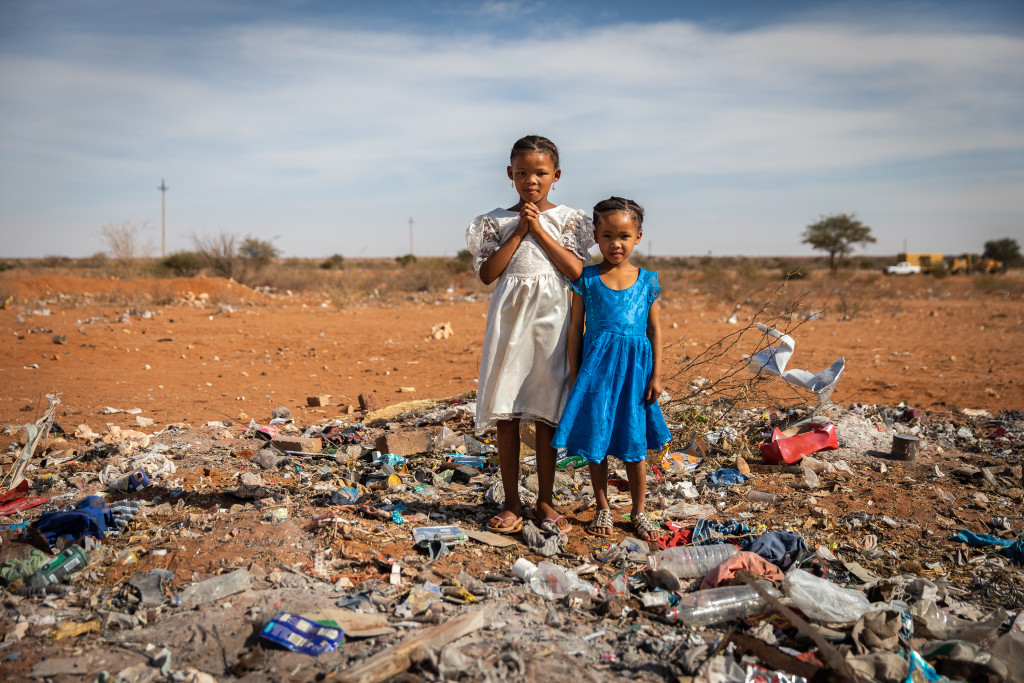
ph: Davide Camesasca/S4C Spain
Theopauline Goliath, la antigua directora de la escuela primaria de Gochas, fue la encargada de mostrar la situación de los menores que se encontraban en una situación más crítica. Ella es quien propuso a Shoot4Change viajar a Gochas y pidió su ayuda para la construcción de una casa de acogida que de a los menores un hogar seguro con un ambiente saludable.
Uno de los casos más preocupantes fue el de Flora, una niña de 10 años que perdió a sus padres, ambos afectados por el sida, y ahora vive con un matrimonio adulto (59 y 60 años) que no trabaja y pasa la mayoría de su tiempo bebiendo en una chabola que realiza las funciones de destilería. Flora también vive con su hermana pequeña, Michelle, y los dos nietos biológicos de la pareja con la que reside, a los que cuida, alimenta y limpia. Los fines de semana, la pequeña se ocupa de alimentar a los otros menores que viven en el barrio. Junto con otros niños, se organizan en grupos para cazar pájaros, desollarlos y asarlos al fuego. Según Flora, ayuda a otros niños porque siente lástima por ellos. Además, la menor admite que no le gusta vivir con su abuela adoptiva porque cuando bebe demasiado la castiga, la golpea y la insulta.
Una vez realizado el trabajo sobre el terreno, los tres miembros de Shoot4Change inician ahora sus proyectos fotográficos, audiovisuales y periodísticos, en los que plasmarán la realidad de los niños que viven en este poblado de Namibia. Shoot4Change no olvida su función social y, por ello, el resultado de sus esfuerzos servirá para llevar a cabo una campaña de recaudación de fondos que tendrá la finalidad de mejorar la vida de estos menores.
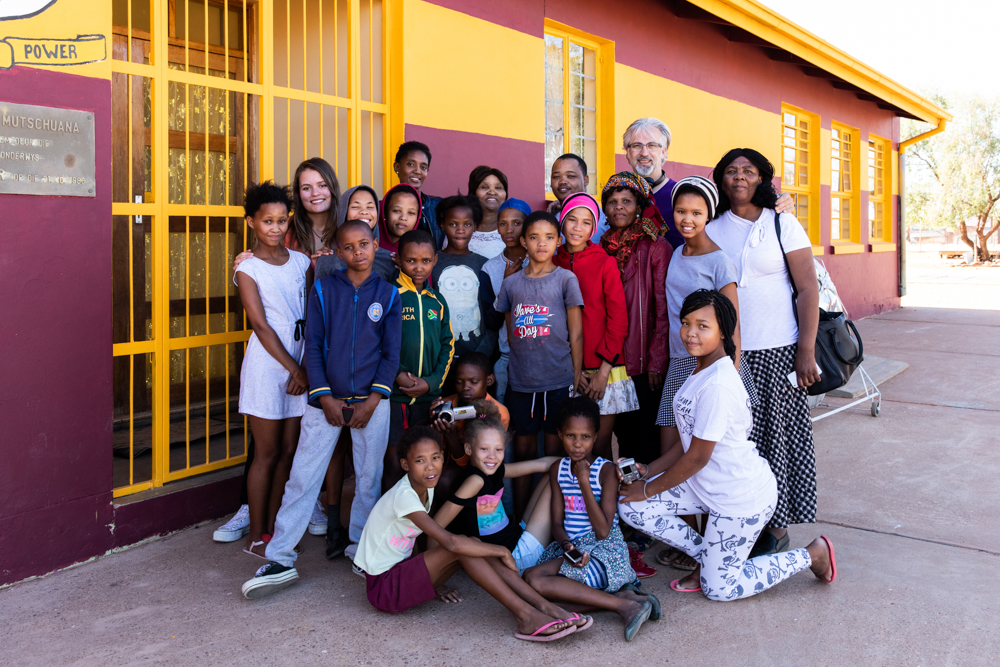
-
1
-
0Shares
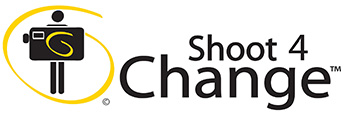

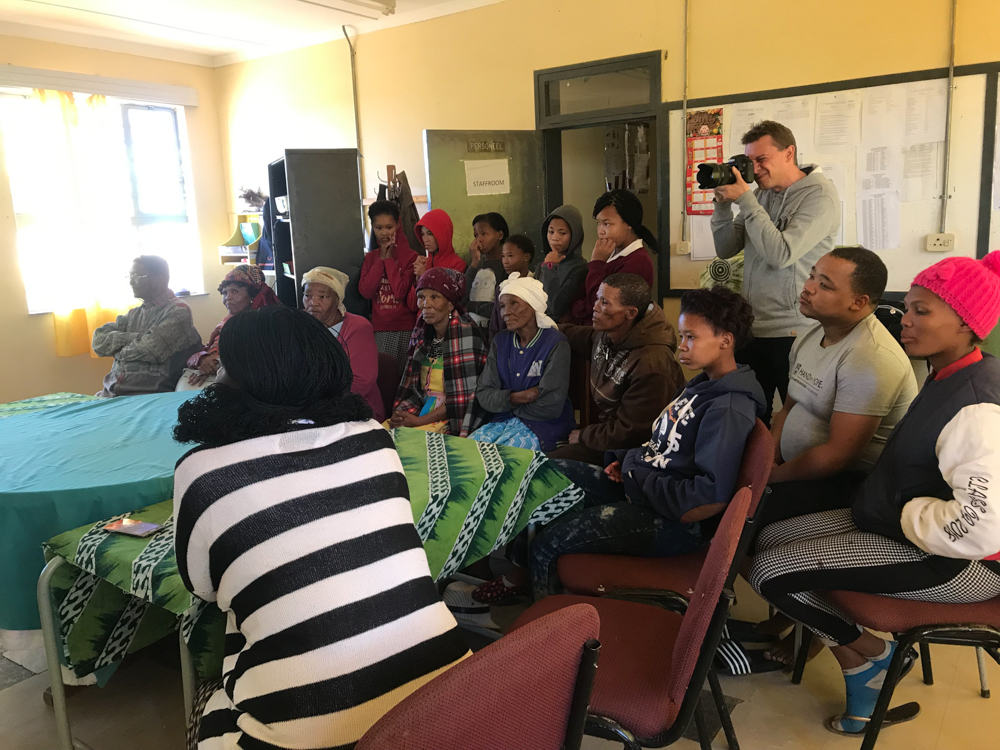
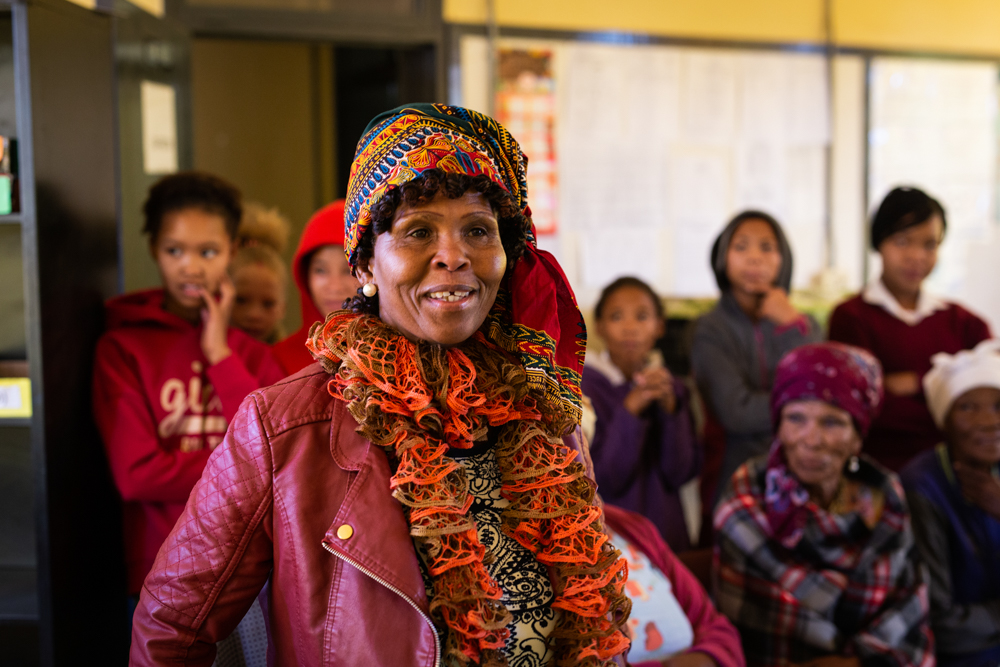
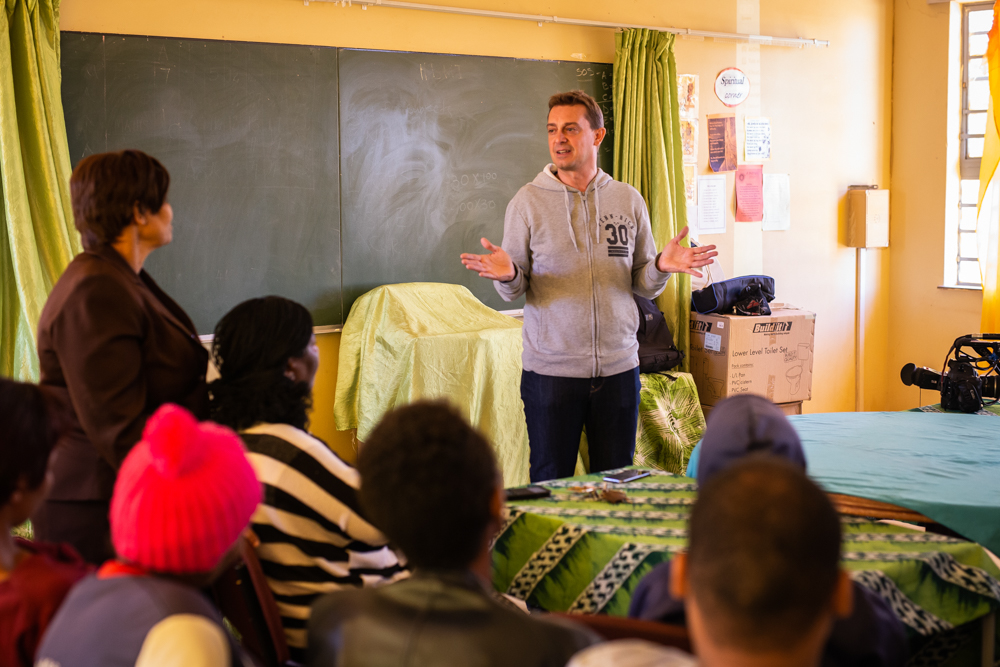
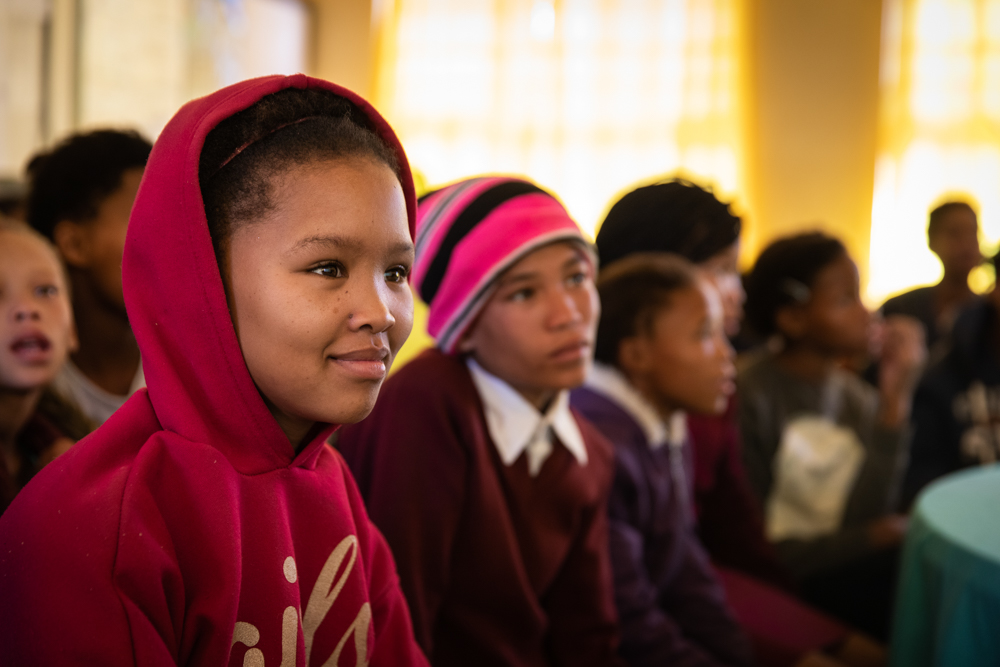
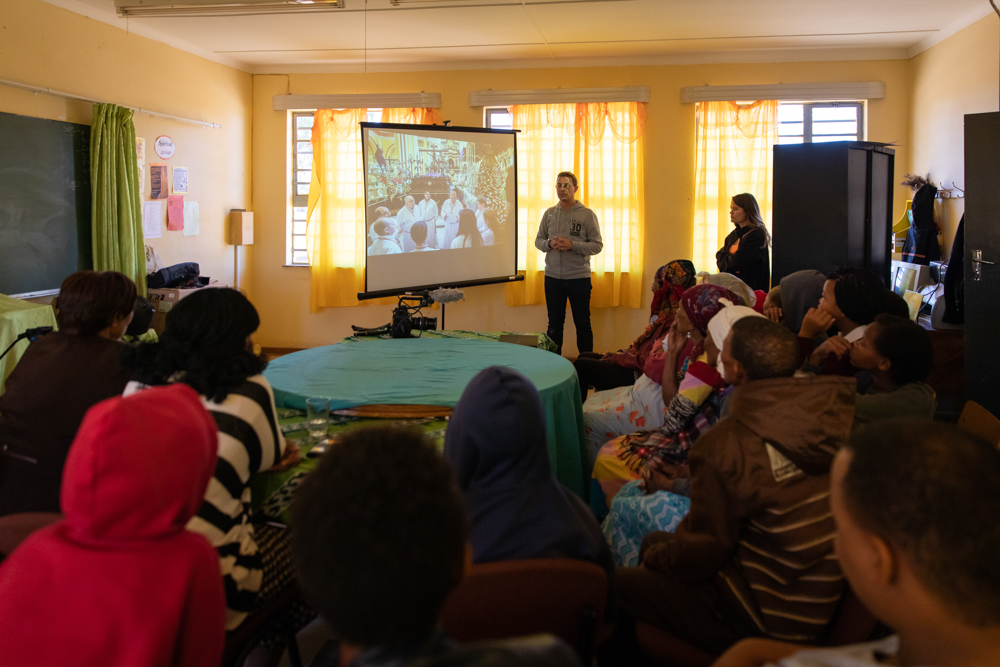
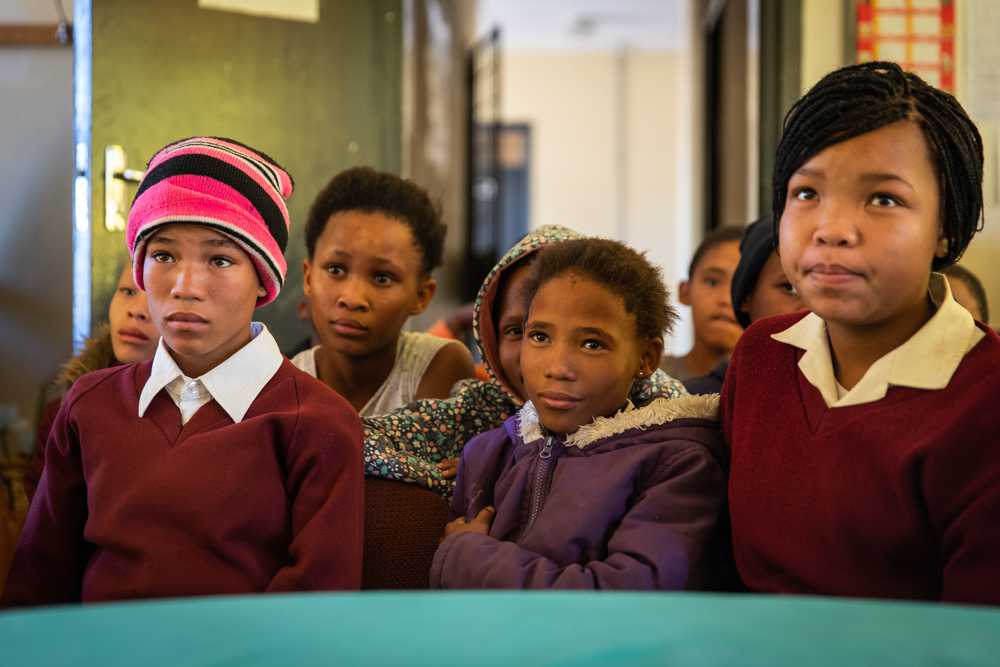
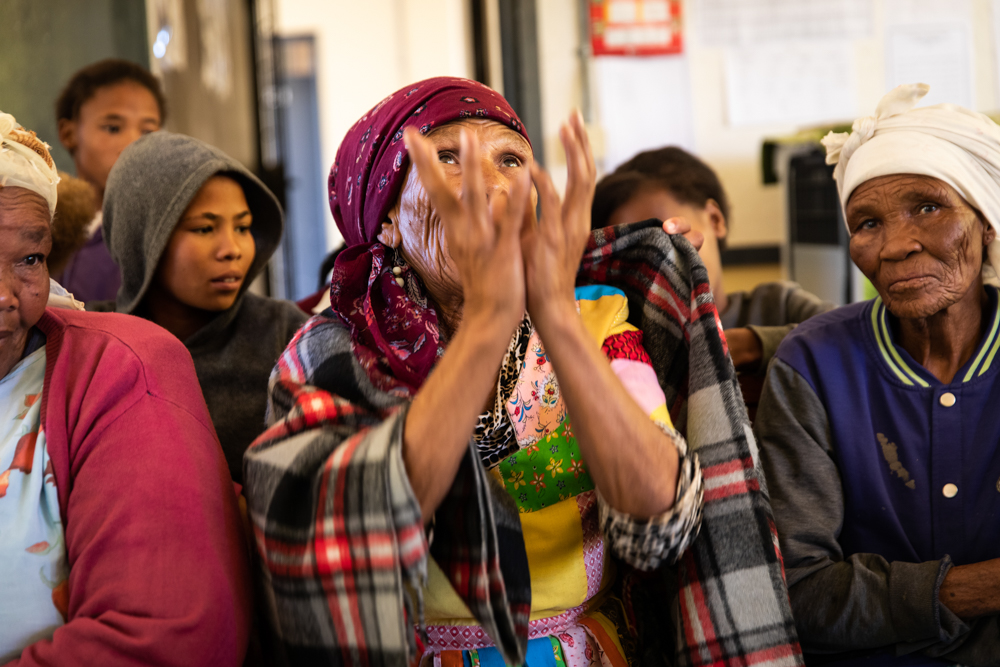
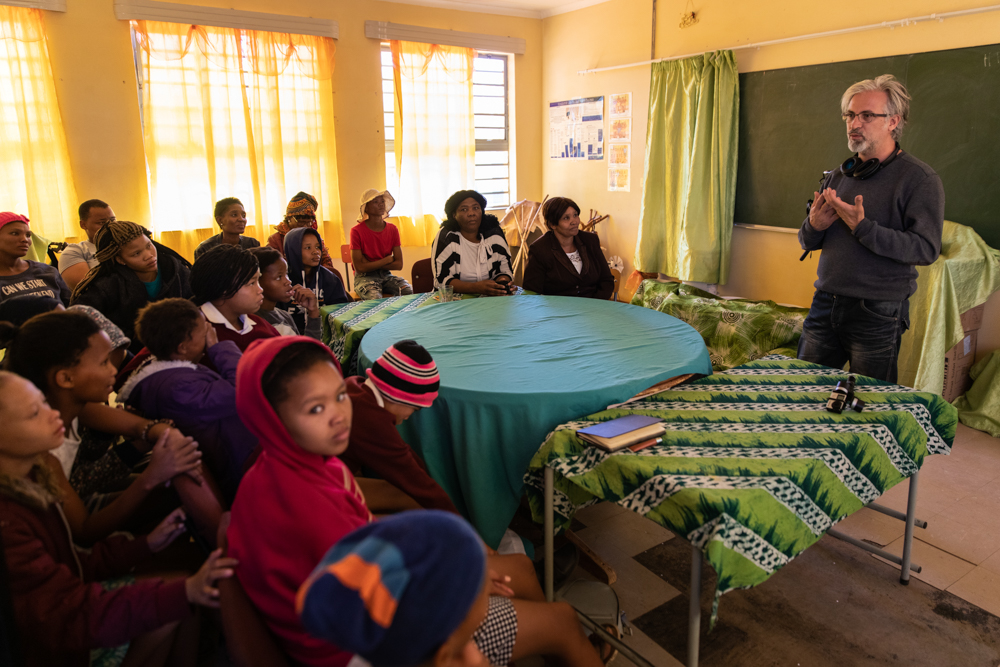
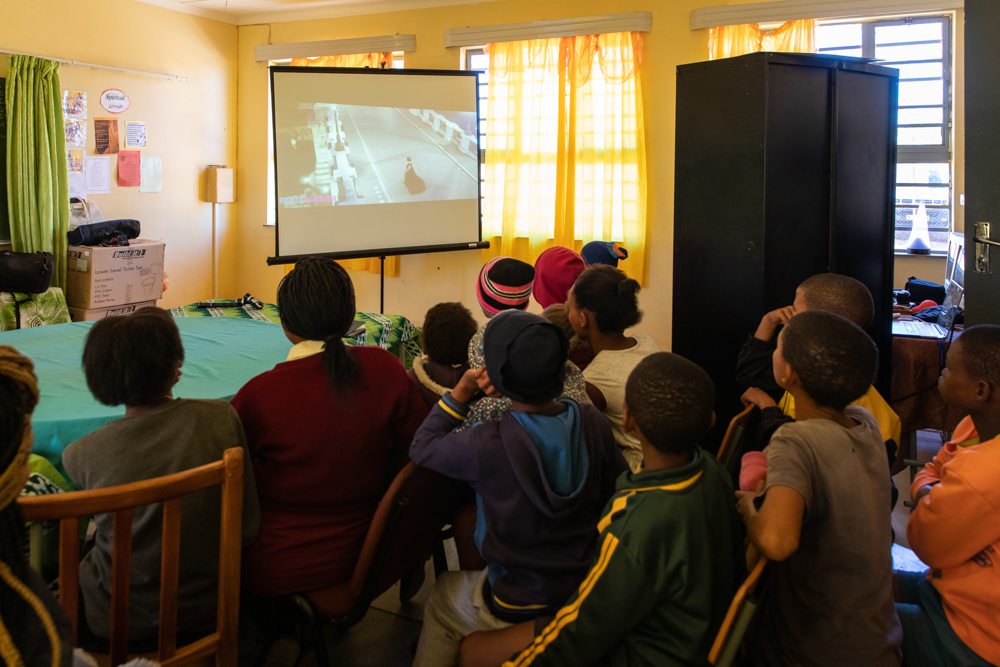
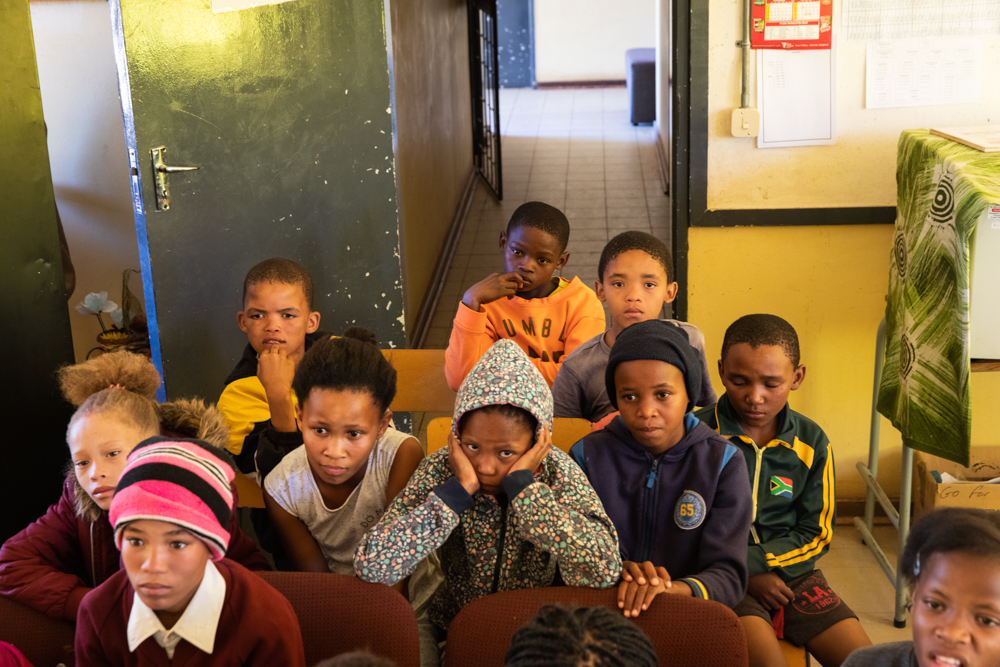
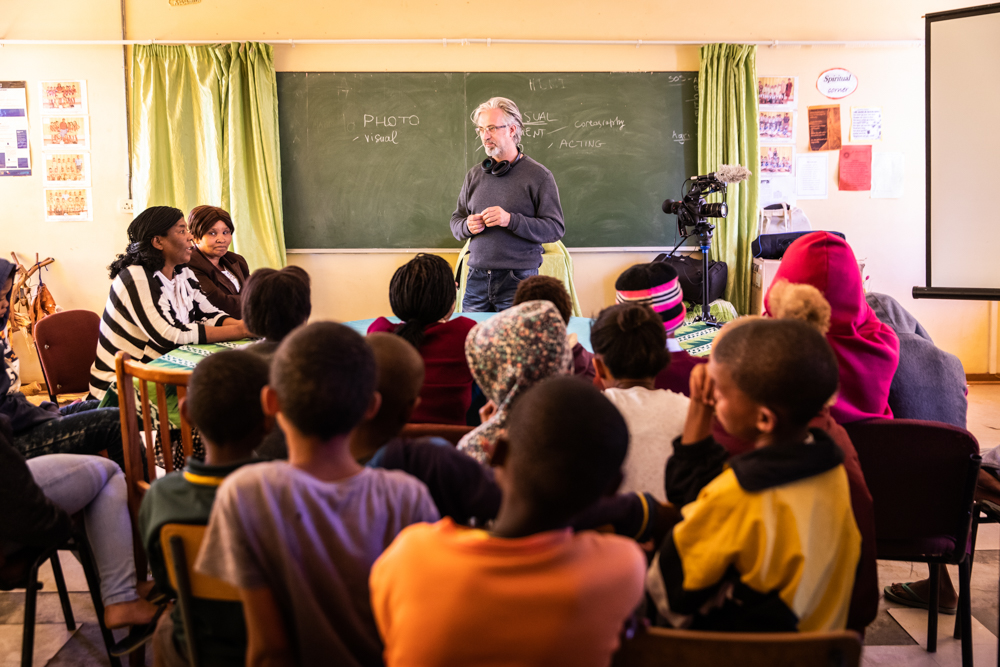
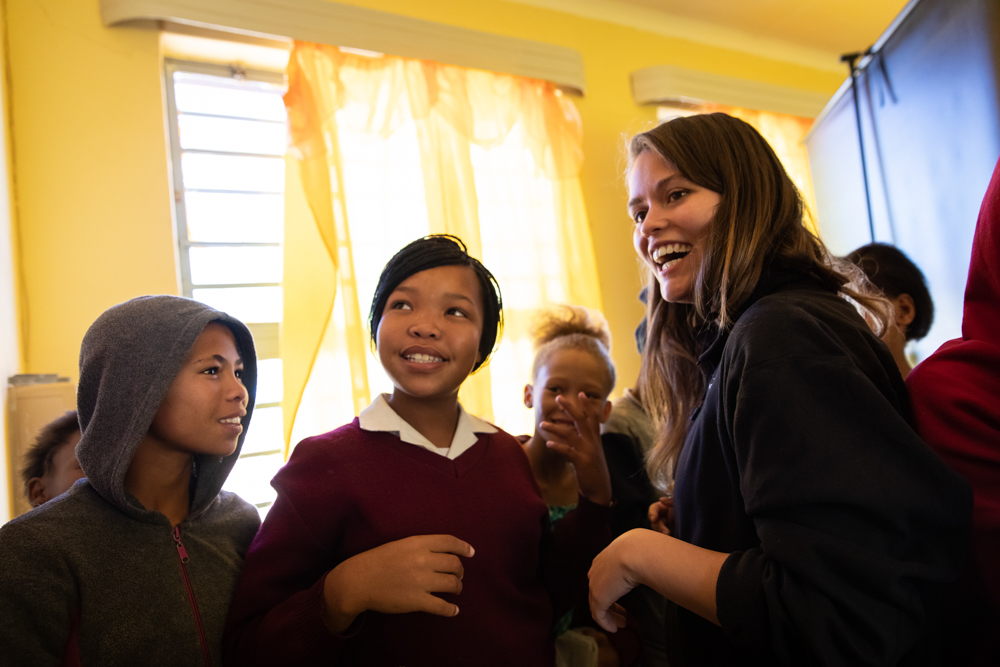
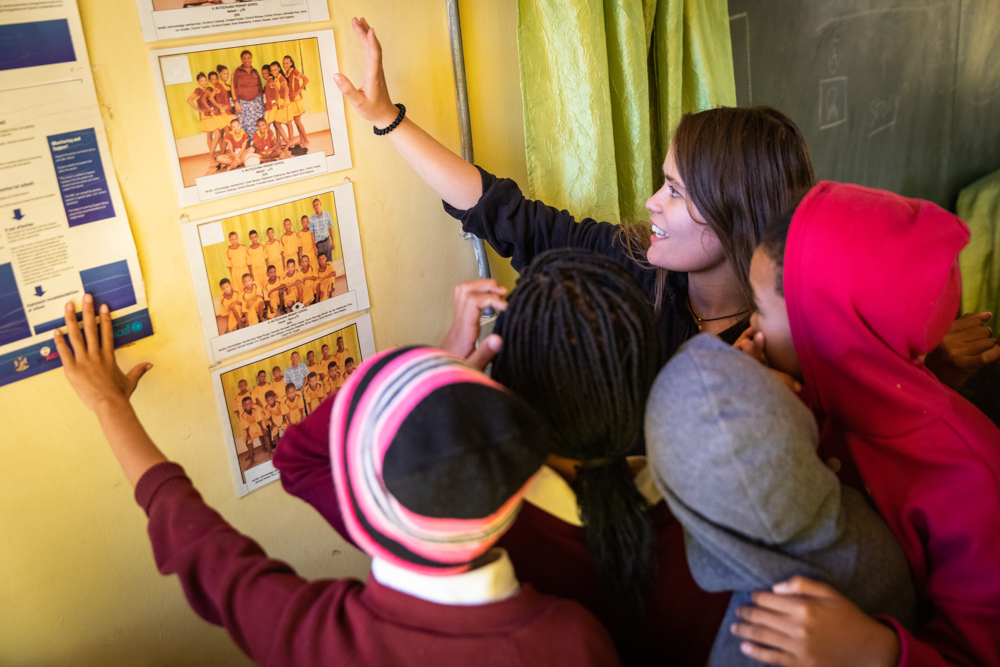
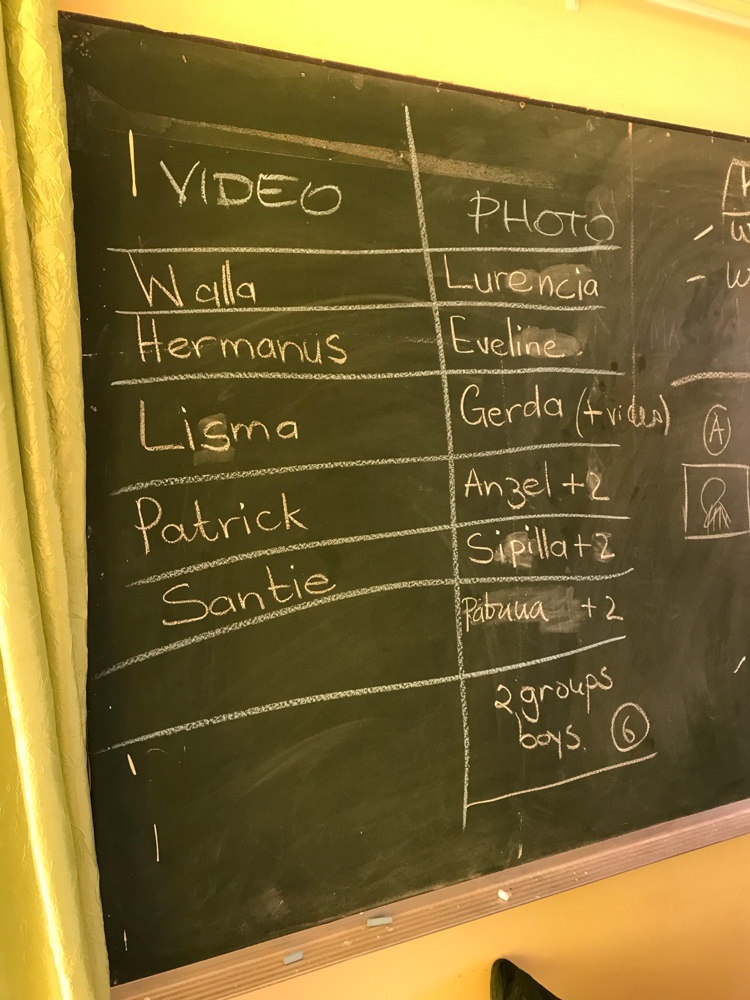
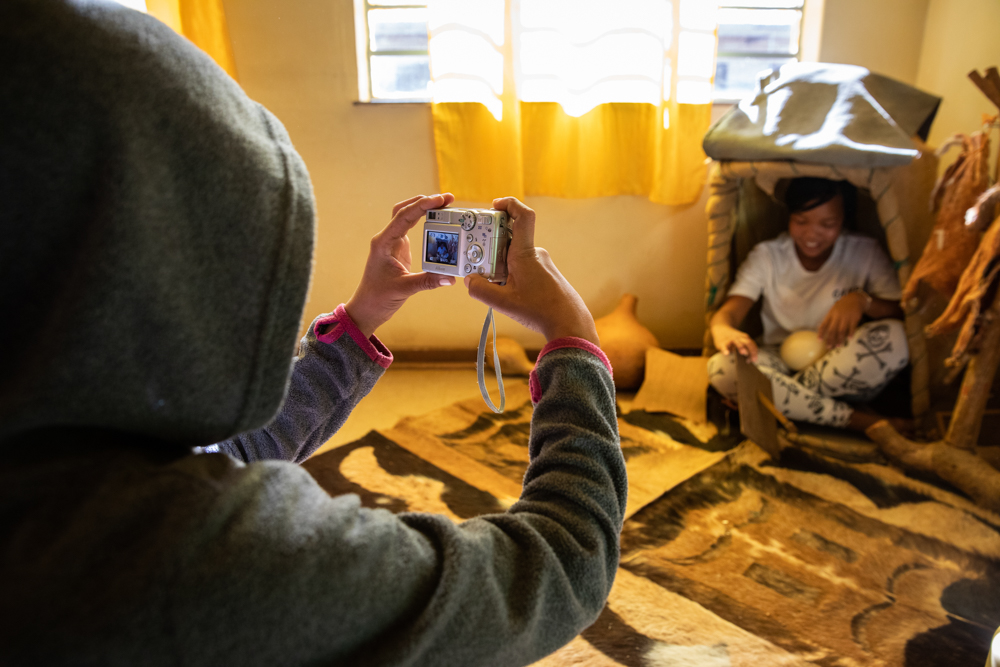
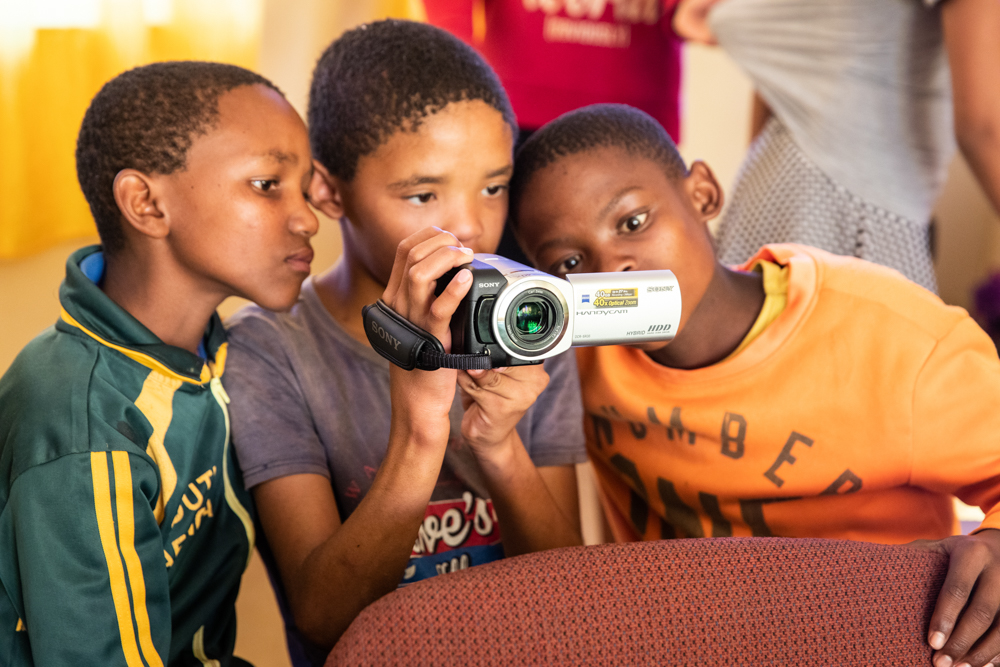
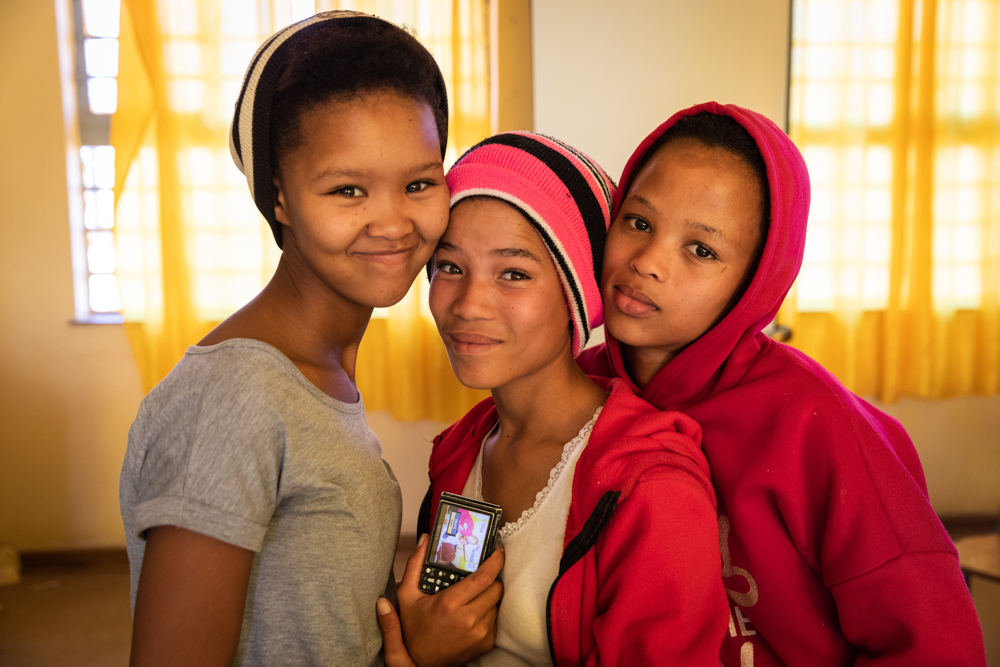
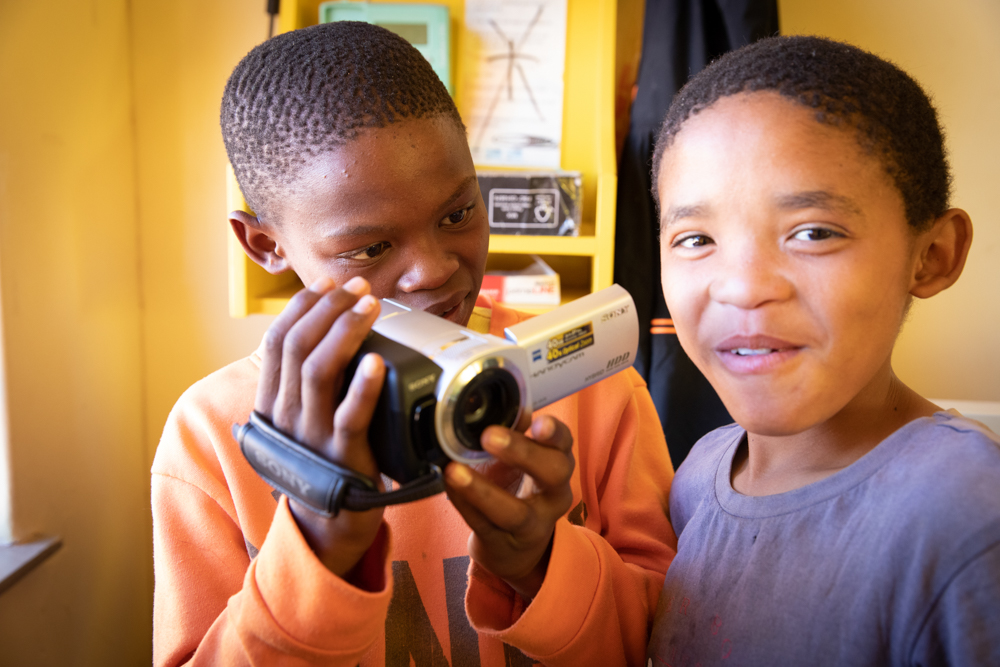
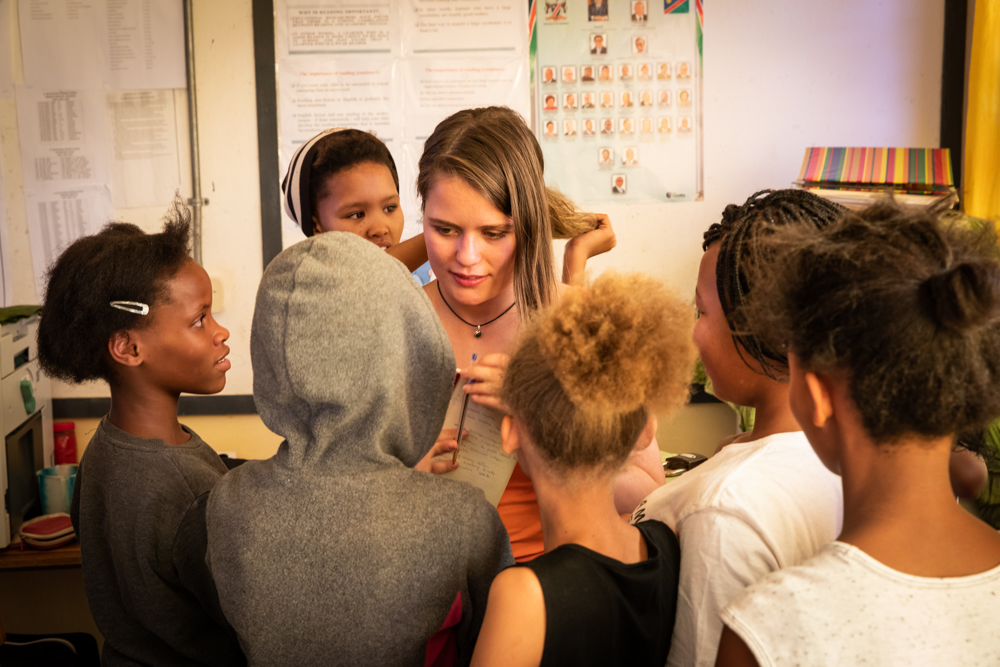
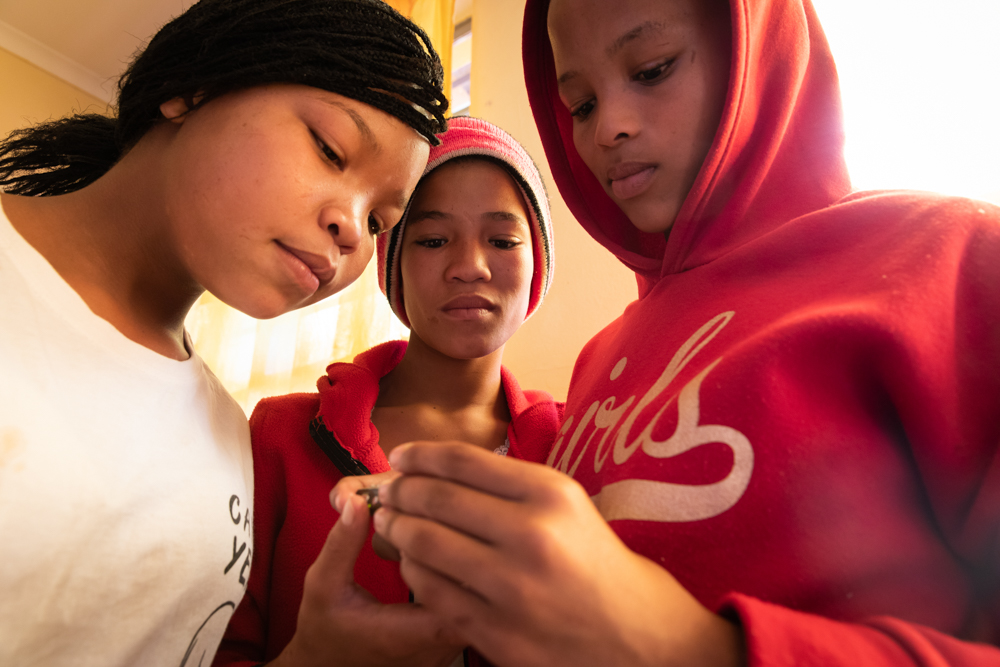
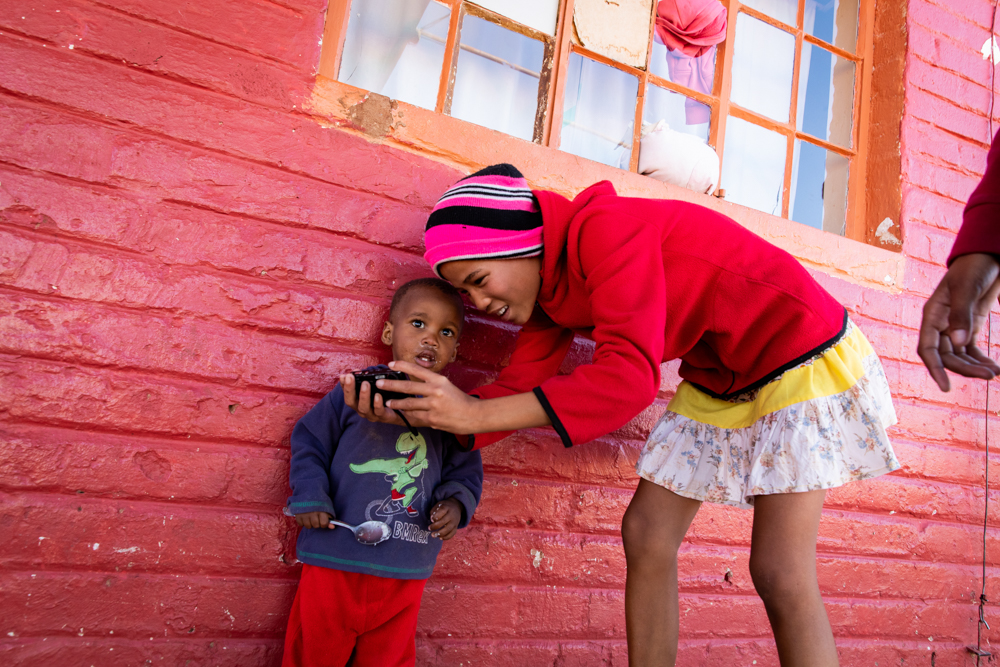
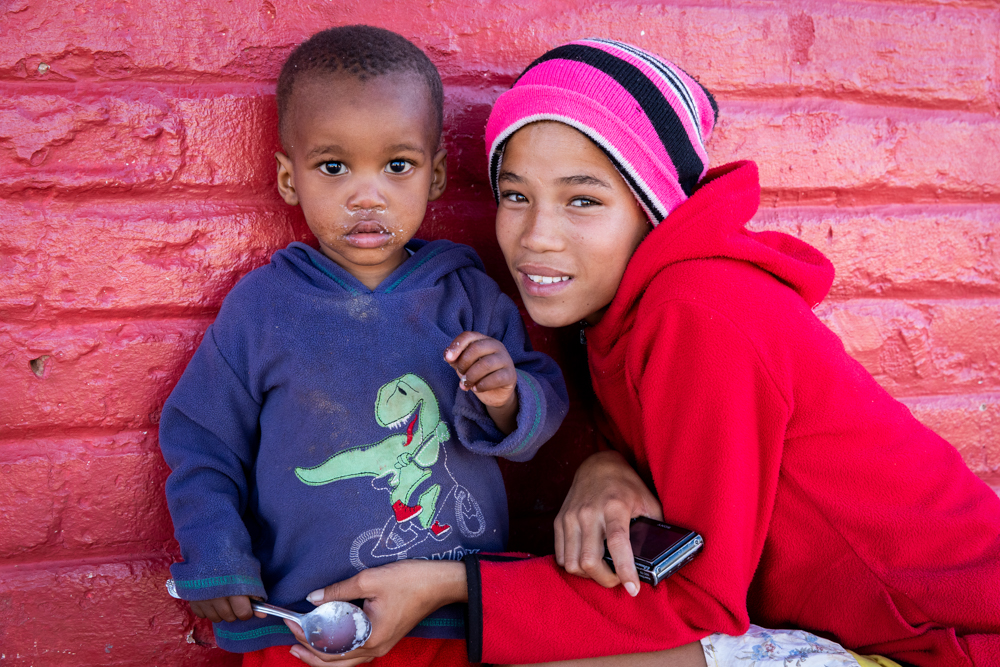
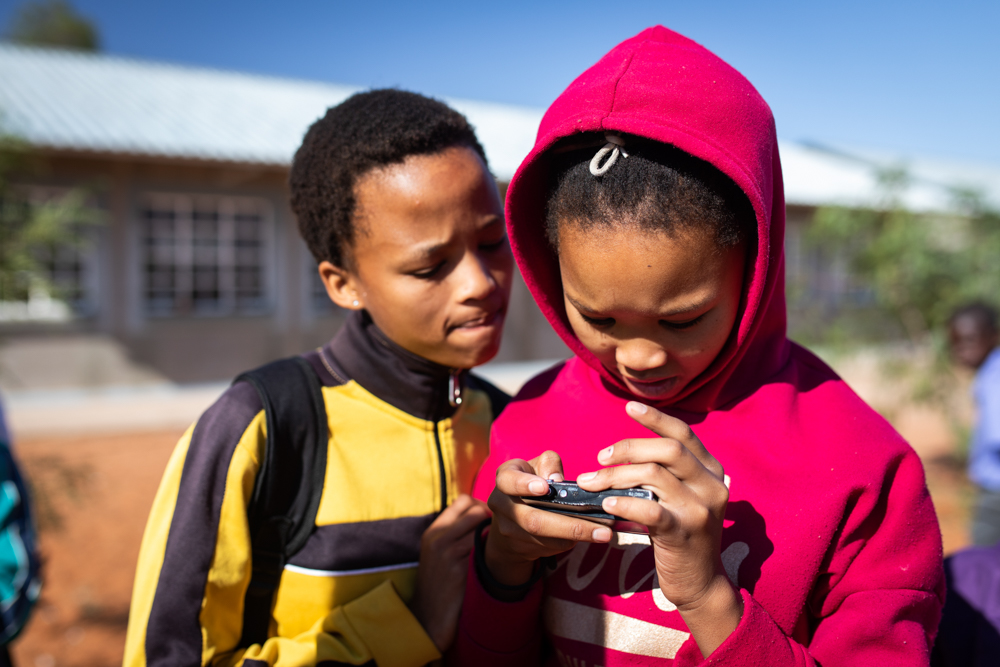
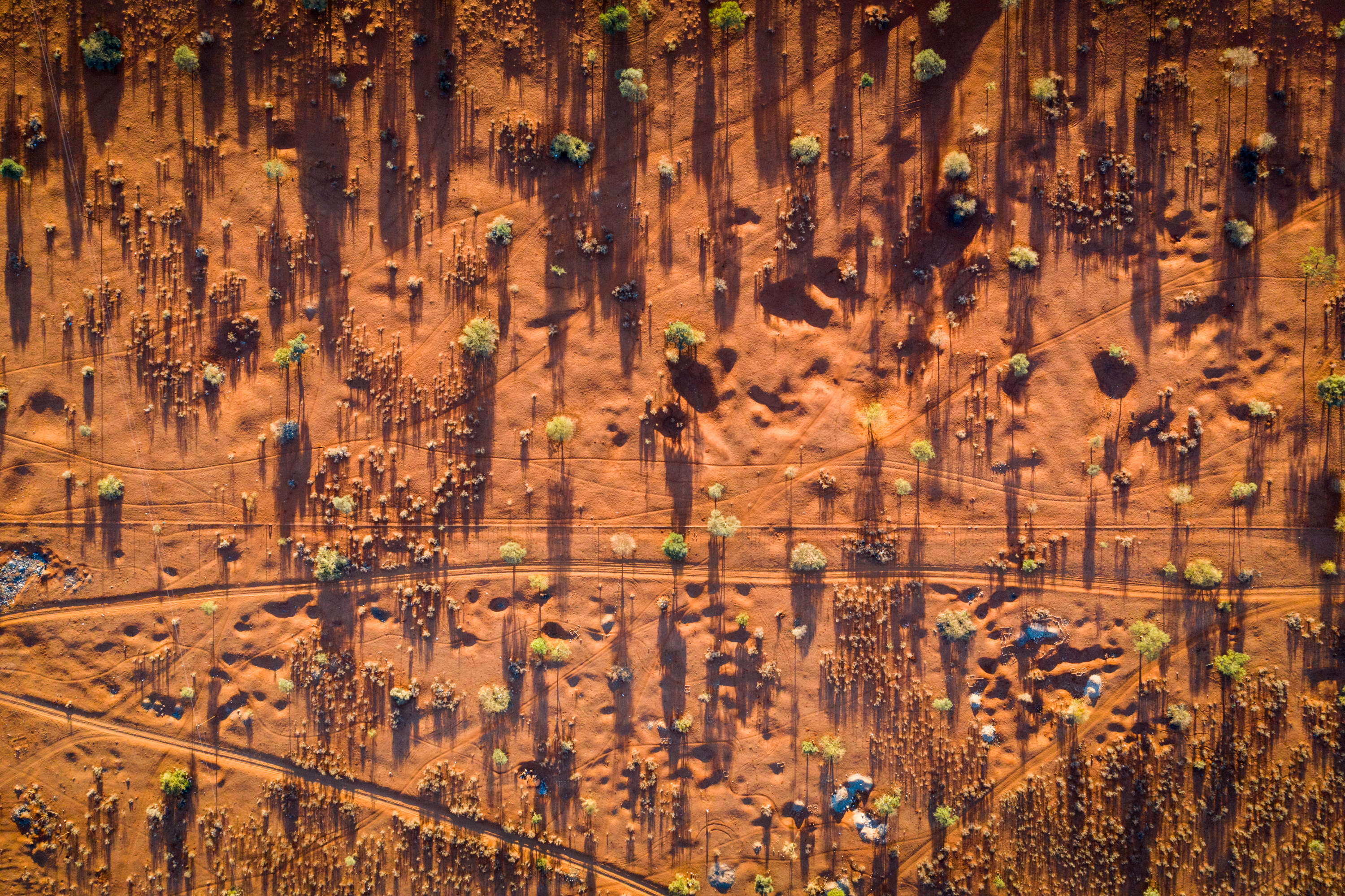
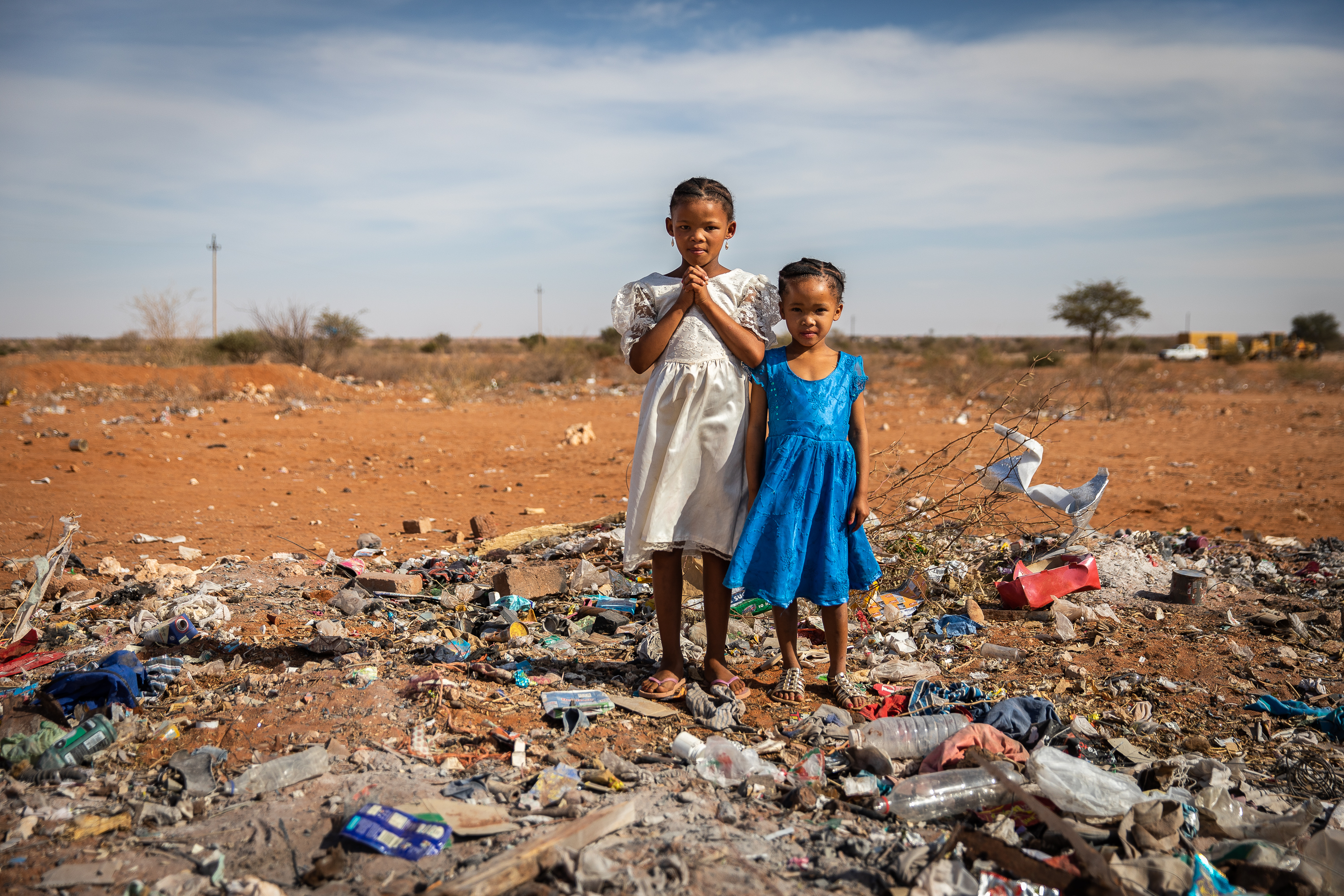
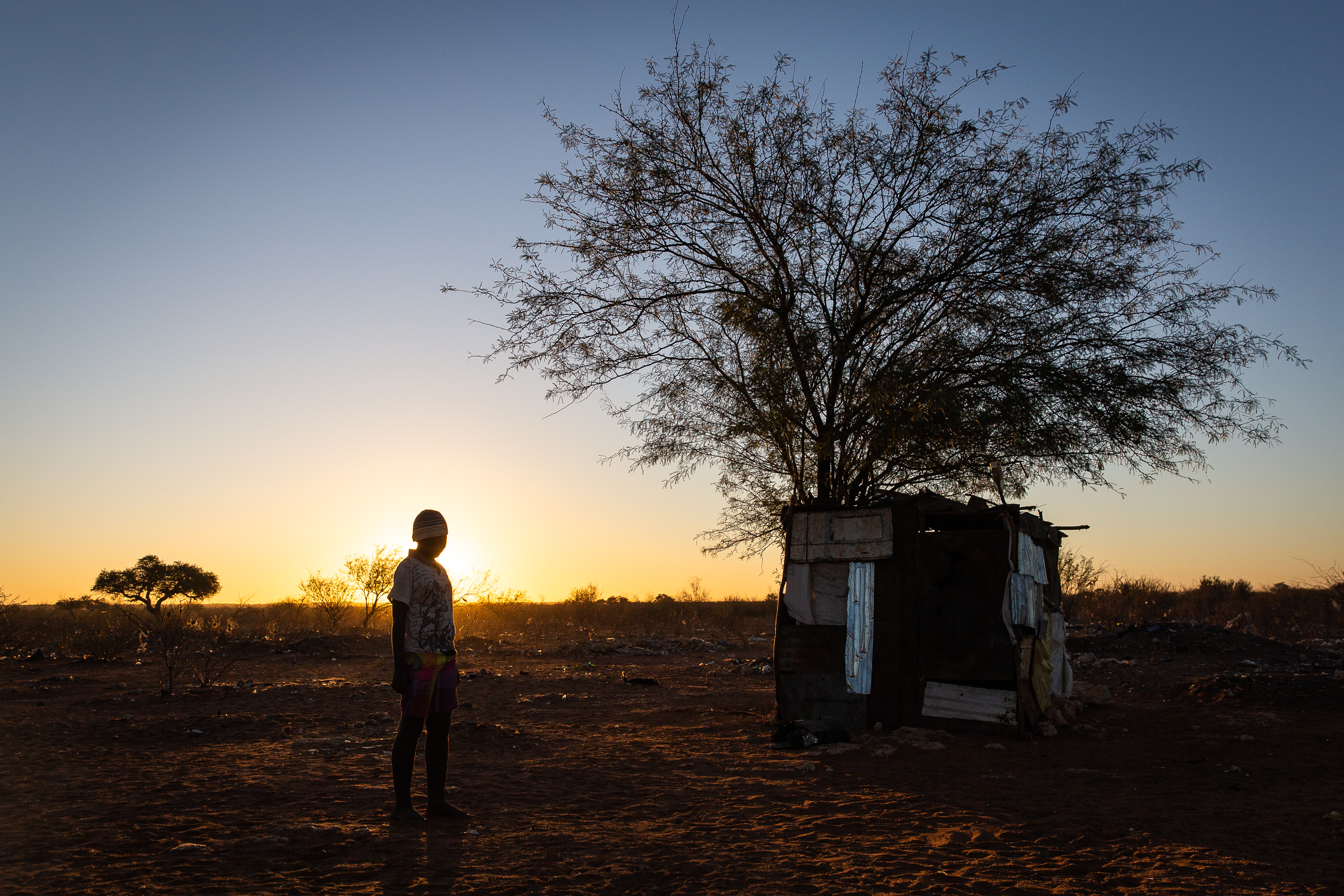
This is a very informative article; a real eye opener which seeks to awaken the nation’s ignorant conscious of basic human rights. I wouldn’t have known. Thank you.